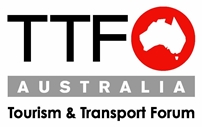TTF Media Release
24/7/2023
SEAMLESS TRANS-TASMAN BORDER IS FIRST STEP TO QUICKER, EASIER TRAVEL
The tourism sector is urging Australia and New Zealand to agree to trial new technology to make travelling across the Tasman quicker and easier.
Tourism & Transport Forum (TTF) CEO Margy Osmond said the tourism, aviation and broader business communities see the upgrade of Australia’s border processing systems as a major, necessary reform, and consider the Trans-Tasman border as the logical place to start.
“We should use the Trans-Tasman border as a test case, so we can trial more efficient, entry and screening technologies to process incoming passengers. These tools are already being used successfully in other countries to simplify air travel, slash travel times and boost security,” Ms Osmond said.
“New Zealand is currently our largest source market for international visitors. If successful on the Tasman, these reforms could form the basis of similar changes to revolutionise travel from other trusted, high-volume markets.”
She called for Australia and New Zealand to establish a joint taskforce, made up of industry experts and government departments from both countries, to help lead progress on a seamless border.
“Without urgent action, Australia risks falling behind the rest of the world. We need a working group established before the end of August and we’d like to see a trial or pilot program in place by the end of the year,” Ms Osmond said.
She welcomed the New Zealand Government’s roll out of a digital passenger arrival card to enter New Zealand, to process travellers through airports more efficiently and improve safety and security.
“Australia was one of the first countries to introduce smart gates and e-passports, but progress has stalled. Passengers who arrive in Australia are still being asked to fill out paper arrival cards with a biro. This should be a thing of the past in our digital age,” Ms Osmond said.
She welcomed the recent speech from Australian Border Force Commissioner Michael Outram, in which he emphasised the “pressing” need for border reform, noting “too many of our critical IT systems are dated and too many of our methods are as well.”
She said it was sobering to discover, as the Commissioner pointed out, that Australia plunged from 25th to 106th in the World Bank’s ‘trading across border’ rankings between 2010 and 2020.
Ms Osmond said the tourism sector fully supports the ABF Commissioner’s push to improve the system and is keen to work with government agencies on both sides of the Tasman to see this progressed as soon as possible.
Her comments follow her discussions last week with business and political leaders in Wellington at the annual Australia and New Zealand Leadership Forum (ANZLF), which coincided with the 50th anniversary of the Trans-Tasman Travel Arrangement, and 40th anniversary of the Australia-New Zealand Closer Economic Relations Trade Agreement.
She said a taskforce of experts should ultimately decide the most suitable reforms for Australia to implement, but could consider a broad range of sweeping changes.
- Goal 1: Deliver a seamless Trans-Tasman border
These border reforms could include, for example, granting immigration ‘pre-clearance’ at the point of departure or leveraging the latest screening technology to drastically reduce the time spent in queues, while improving border security.
“We want to make it as easy as possible for tourists, business travellers and cargo to come to Australia, by ensuring they aren’t facing unnecessary delays on arrival. The smartest way to speed up passenger movement through our terminals is to remove people from queues who don’t need to be there,” Ms Osmond said.
“Border formalities could be slashed by linking each passenger’s travel documentation to facial recognition technology. You could identify Trans-Tasman passengers as they pass various points between baggage check-in and boarding their aircraft, without them needing to stop or produce passports, travel documents or even boarding passes.
“When passengers drop off their bags before their flight, you could use facial recognition technology along with a digital arrivals card, which they would have already submitted, to assess each passenger during their flight.”
- Goal 2: Establish a joint Trans-Tasman visitor visa
Ms Osmond added that Australia and New Zealand could also trial a joint Trans-Tasman visitor visa as part of these changes.
She expressed her disappointment this was not established in time for the FIFA Women’s World Cup, being hosted by Australia and NZ, given the tourism sector called for this more than 12 months ago.
“The FIFA Women’s World Cup would have been the perfect opportunity to establish this visa, but we shouldn’t give up on this reform. It would make it easier for overseas tourists to visit both Australia and NZ on a single trip, encouraging more tourism to our region,” Ms Osmond said.
